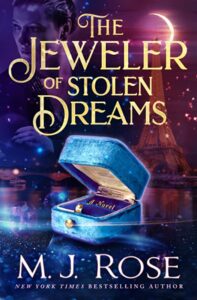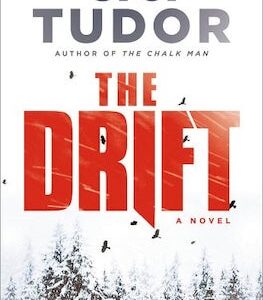meth·od act·ing
/ˈmeTHəd aktiNG/
noun
- a technique of acting in which an actor aspires to complete emotional identification with a part, based on the system evolved by Stanislavsky and brought into prominence in the US in the 1930s. Method acting was developed in institutions such as the Actors’ Studio in New York City, notably by Elia Kazan and Lee Strasberg, and is particularly associated with actors such as Marlon Brando and Dustin Hoffman.
I didn’t start out aspiring to be a novelist and I came to it later than many. I was in my late thirties, the creative director of a NYC ad agency when I started writing screenplays. When one was stolen and produced, I learned how powerful Hollywood studios were and how expensive it would be to sue. My literary lawyer told me that if I wanted any control I needed to move to LA and really get involved in the business.
But I wanted to stay in New York.
“Writers in New York,” he said, “write novels.”
And so it began. I had been an avid reader and always imagined writing a novel one day but the stolen screenplay was all the impetus I needed.
Except I had no idea how to write a novel. I’d been working on screenplays with a writing partner whereas a novel was a solitary effort. Screenplays are spare in exactly the way novels are complex. Screenplays are all direction and dialog. Novels can be interior. One of the biggest differences between the two is that when you write a screenplay, you leave a lot out about the character in order to give the actors room to bring their art to the party.
Not true with novels.
After a dozen aborted attempts and reading too many “how to write a novel” books, I decided that I needed to know my characters in a much more intimate way than I was used to.
Character development had never been my strength in the screenwriting process. That was my writing partner’s forte. Mine was description and plot. But here I was on my own. I had to figure it out. So, I turned something I knew about from the film world— the idea of method acting. I figured if the process helped actors inhabit their characters in deep and meaningful ways in order to bring them to life, then that’s what I’d do. After all, I was bringing them to life too, wasn’t I?
Unlike Robert DeNiro, who gained 60 pounds to emulate Jake La Motta in Raging Bull, I’ve never gained weight to help me create a character. (Well, maybe a few extra pounds eating croissants for breakfast like one of my characters.) But I have done some rather unusual things.
I studied phone sex with a sex worker who arranged for me to speak to one of her clients so I would understand how my characters would feel as a phone sex operator.
I spent two months with a trans-life therapist to understand what it’s like to discover your past lives like one of my characters.
I got a job as a perfumer’s assistant to understand how to create perfumes.
Part of this method-writing that I do for every novel involves other aspects of my characters’ lives besides just their jobs. I listen to the music they listen to, I read the books they read and eat the food they eat. I also dress like my characters while I am creating them and need a talisman—something that belonged to my character—a touchstone if you will—to connect me to my imaginary friend on a very deep level.
For The Secret Language of Stones I found a WW1 trench watch and never took it off. For The Library of Light and Shadow it was a piece of sea glass that my main character had found when she was a little girl. For The Seduction of Victor H., a fountain pen that I had to dip into ink to use, the same way my character did.
For my latest book, finding that talisman came with a new complication.
The main character in The Jeweler of Stolen Dreams is Suzanne Belperron. She was born in a tiny town in France 1900 and died in Paris in 1983, in between she created some of the most original and iconic jewelry of all time.
“Her designs are so singular—bold, playful, anti-ornamental—that they tend to strip away one’s assumptions about jewelry in the latter half of the 20th century, if not in the period before World War II. Her effect was nearly that of Coco Chanel in fashion; Belperron’s sculptural shapes anticipated modern design and, like Chanel, she showed that high style could come from unfancy elements,” writes Cathy Horne in The New York Times.
Despite being such an important designer, there are no autobiographies about Mme. Belperron. Her letters have never been published. If there are still people alive who knew her well enough to speak to me about her, I couldn’t find them. And while all of her more than 90 journals exist, the strict privacy laws in France, prevented me from learning anything more than I could find from the two coffee tables about her work.
During her life Mme. was intensely private. She wanted her jewelry to glitter and shine. Not her. She gave few interviews and is described as being enigmatic. But in order to write about her, I had to inhabit her. But how do you find someone who wanted to remain hidden behind her gemstones.
After months of sleuthing, I stumbled on a 1940s women’s magazine article focusing not just on the designer but the woman, she was. It listed what nail polish, eyes makeup and lipstick she wore. Scouring the internet I found all those products were still made. I ordered them and used them the whole time I was writing.
I learned she favored minimalist clothes, mostly black—to show off her jewelry. That one was the only easy one—I pretty much only were black. (IYKYK- it’s a native New Yorker thing.)
In a photo of her that accompanied the article, I was able to zero in on the shape of her fingernails and fashioned mine to match.
The reporter wrote that Mme. Belperron loved baths. (Sadly, she died from a scalding hot bathing accident). I gave up my showers and for months only took baths.
Even with all those efforts, one thing was missing. I was writing about a famous jeweler who exclusively wore the jewelry she designed. I became convinced I had to have a piece of her jewelry to wear. That I wouldn’t “find” her without it.
But there was a problem. Never mass-produced, Mme. Belperron’s pieces are extremely costly and hard to come by. During her life she sold only to an exclusive clientele. Of the few pieces I saw in my search, not one was less than five figures. Many were six figures. Unlike the mascara she used, I couldn’t find a Belperron piece of jewelry to buy on eBay and wear to get into character.
Except I was convinced I’d never “find” Mme. Belperron well enough to write about her unless I could wear a piece of jewelry that she had created.
And so I set out to borrow a piece from an art connoisseur I had met while doing my research. Easier said than done when you are dealing with pieces worth at least five figures.
Ms. X.s collects jewelry, paintings and sculpture. Her apartment is an Ali Baba’s cave of treasures. I never thought she’d agree to what I was asking. But she was intrigued. There were a few complications and conditions. Her insurance company had to agree to the loan (they agreed but required she take out a rider) and I had to agree in writing that I would not wear the borrowed jewelry out of my home.
For six months I wore a simple 22 carat gold “moi and toi” ring designed by Mme. Belperron, created under her auspices and sold by her to one of her best clients. I also borrowed and wore a brooch of carved rock crystal and sapphires.
How do you know when you’ve gotten the character right? When do you stop trying to find them and put them into words? When do you stop questioning if readers will be able to imagine the flesh and blood person that you’ve put down on the page?
I can never predict when it will happen. But usually after the first draft of a novel is done and I’m well into the second draft, there will be a time when I’ll realized that it’s time to step out of the character’s shoes and back into my own. Or in this case, there was a day when I was typing and saw Mme. Belperron’s ring on my finger and knew that I needed to take it off and put my more modest one back on.
The ghost of the stunning, world class designer and enigmatic woman had helped me find her character and her story through her creations. It was finally time for me to let her go and finish mine.
***


















